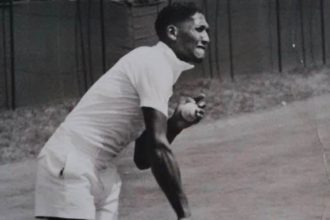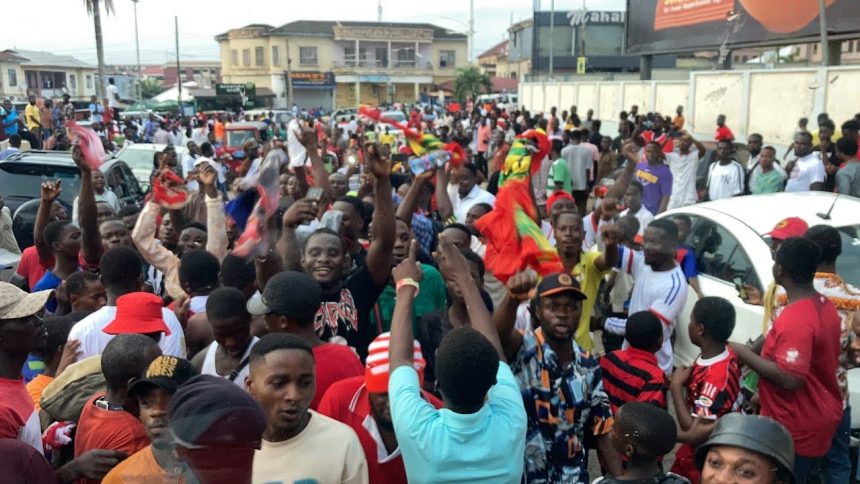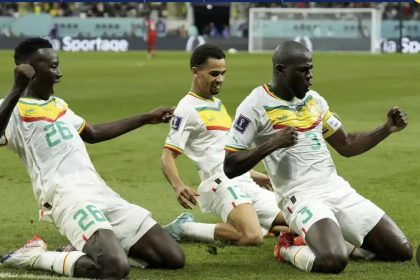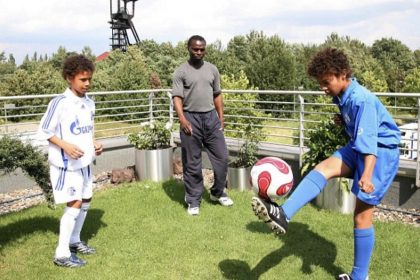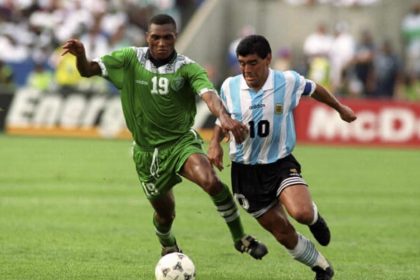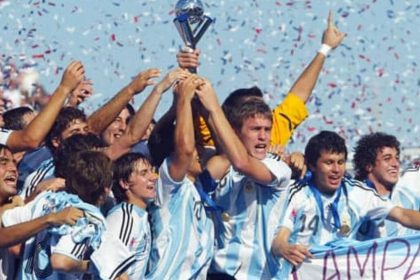No group beats the Asante Kotoko fans when it comes to frenzy and intense joyous rage. The Asante Kotoko emblem coincidentally features a remarkably threatening looking porcupine and the motto “Ashanti Twi: Kum apem a, apem beba”, which means “If you kill a thousand, a thousand more will come”, depicting the combative resilience that accompanied the struggles of the ancient Ashanti Kingdom against the invading European colonial forces of the earlier centuries and this is proudly betrayed in the heated riotous and energetic Jama sessions of its passionate supporters as seen in the video accompanying this post. To the Ashanti people worldwide Asante Kotoko SC is more than just a sports’ institution but their cultural heritage.
Traditionally Asante Kotoko players usually joined their teeming supporters in this heated JAMA sessions after famous victories which were so common in their rich history.
The “Kotoko Fan Fest” which is a significant event in the club’s calendar provides an opportunity for supporters to interact with officials and other stakeholders and it is always a moment of intense celebration in riotous joy.
African football is so colourful and Asante Kotoko supporters are embodiments of these glories, pomp and pageantries.
All these types of glamorous cultures are now gradually deserting African leagues due to financial difficulties occasioned by poor branding and managements, hence scarcity of big sponsors like their European counterparts.
My mind is now nostalgically traveling back to the white handkerchiefs of Stationery Stores FC of Lagos Nigeria’s fans of those days and the vociferous fans of the Royal Casablanca of Morocco and my heart bleeds for traditional African football.
Asante Kotoko is the 6th biggest football team and professional club in Continental Africa and arguably the biggest club in Ghana; Asante Kotoko SC have a speculated ‘religious’ ten million (10,000,000) followers.
The ancient football club have been in existence since 1926 as Ashanti United before being named Kumasi titanic five years later.
On 31 August 1935 this club based in Kumasi in the Ashanti Region of Ghana and Nicknamed the Porcupine Warriors, was formally renamed Asante Kotoko SC.
They compete in the Ghana Premier League and play their home matches at the Baba Yara Stadium in Amakom, Kumasi. Complete with their own TV station (Kotoko TV) they have won the Ghanaian professional league a record 24 times and the prestigious CAF Champions League twice in 1970 and 1983; in 1970 against TP Englebert in Kinshasha.
What would have been their first trophy was the controversial 1967 CAF champions cup final, they drew the first leg 1 – 1 in Kumasi Ghana to TP Englebert and forced the Congolese’ side to a 2 – 2 draw in the second leg in Kinshasa, at the expiration of extra time in the second leg, the referee decided that lots would be drawn to attribute the trophy on the next day, but the CAF secretary-general later arrived, with Cup regulations requiring that a third match be played.
The decider was set for December 27, in Yaoundé, Cameroon, but Asante Kotoko failed to appear (apparently not having been informed of the match arrangements by the Ghanaian FA); as a result, TP Englebert were declared champions.
They lost the final in 1971, 1973 and 1982, before clinching the title again in 1983 by beating Al-Ahly of Egypt in a revenge of their loss to same club in the immediate preceding edition of 1982.
Asante Kotoko would play the final again in 1993, but they were handed a defeat against Zamalek of Egypt in a penalty shootout after both the first and the second legs had ended in a draw, demonstrating a level of proper organisation and continental tradition unmatched by any West African club side up till date.
This Provincial outfit was adjudged Africa’s club of the century by the International Football Federation of History and Statistics.
The club is composed of various supporters’ units, including NCC, Porcupine Tertiary, Kum Apem, Ultras, WeTalk AboutKotoko and VIP Projects, these units of fan’s bases form one of the most formidable group of loyal club’s supporters in the continent of Africa.
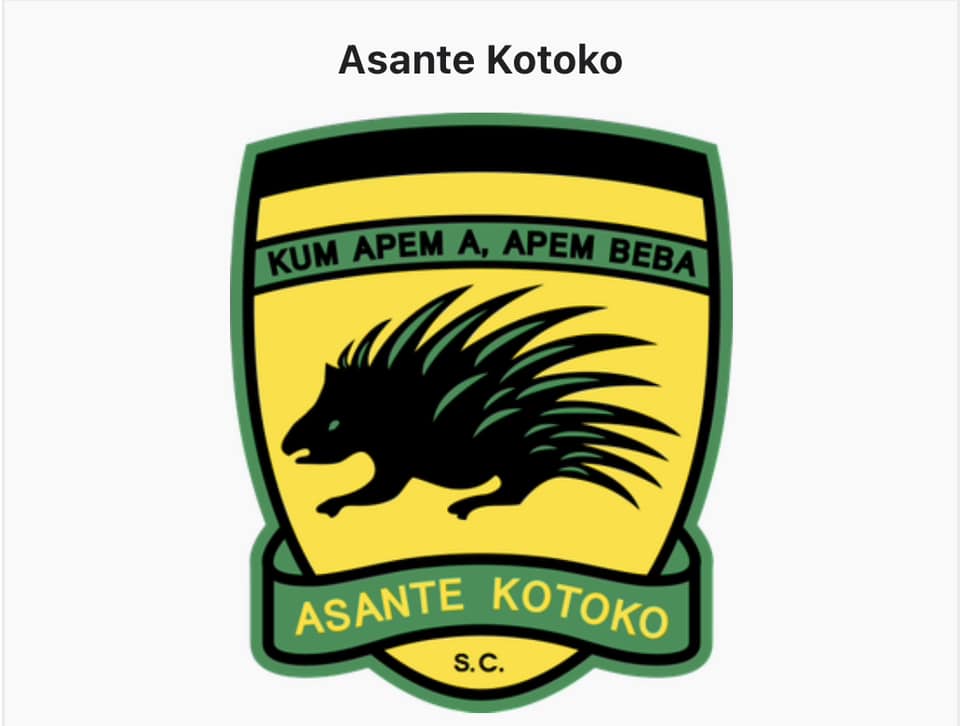
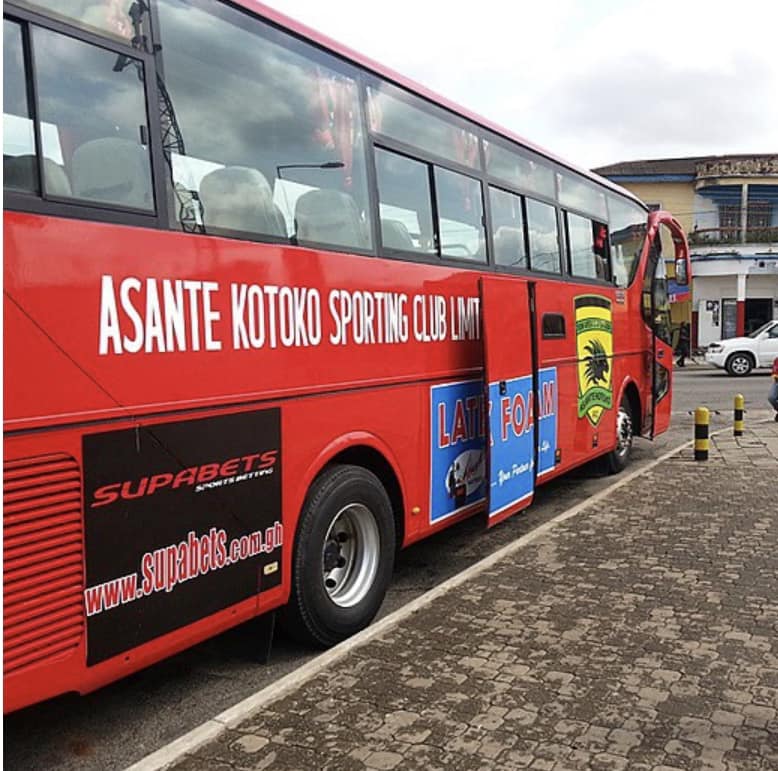
The foundation of Asante Kotoko Sporting Club was laid by 13 young Ashanti men led by a young driver, Mr. Kwasi Kumah who was a native of Nyankyerenease near Kumasi in the Ashanti Region, he was a chauffeur to an English man and military officer, a Colonel Ross, ably supported by L.Y. Asamoah an electrician.
Asantehene King Prempeh II, is the first life patron of Asante Kotoko.
The ancient Empire (Asante Twi: Asanteman), today commonly called the Ashanti Empire, was an Akan state that lasted between 1701 to 1901, in what is now modern-day Ghana.
the empire’s military prowess, wealth, architecture, sophisticated hierarchy and culture marked it out as arguably one of the greatest indigenous cultures in Sub-Saharan Africa.
Ashanti is the 2nd largest producer of cocoa in the world as most of the world’s cocoa is grown in Ashanti, It is also a major site of the world’s gold-mining industry with Ashanti being home to the world’s 10th largest producing gold mine on Earth; The Obuasi Gold Mine. this industrial mineral rich economy of Ashanti is mainly the source of the finance of the ancient club.
The club is the root of many of the greats of Ghanaian football like Tony Yeboah of Leeds United FC of England’s fame, Nii Ordatey Lamptey, Prince Opoku Polley, Ibrahim Sunday (the 1971 African footballer of the year), Opoku Nti, Isaac Vorsah, Samuel Ossei Kuffour of Bayern Munich FC of Germany’s fame, etc.
The owner and life patron of Asante Kotoko sports club is the Asantehene, King of the Ashantis/ Asantes of Ghana, Osei Tutu II.
The club is ranked side-by-side other African great clubs like Al-Ahly and Zamalek of Egypt, and Canon de Yaoundé of Cameroon.


